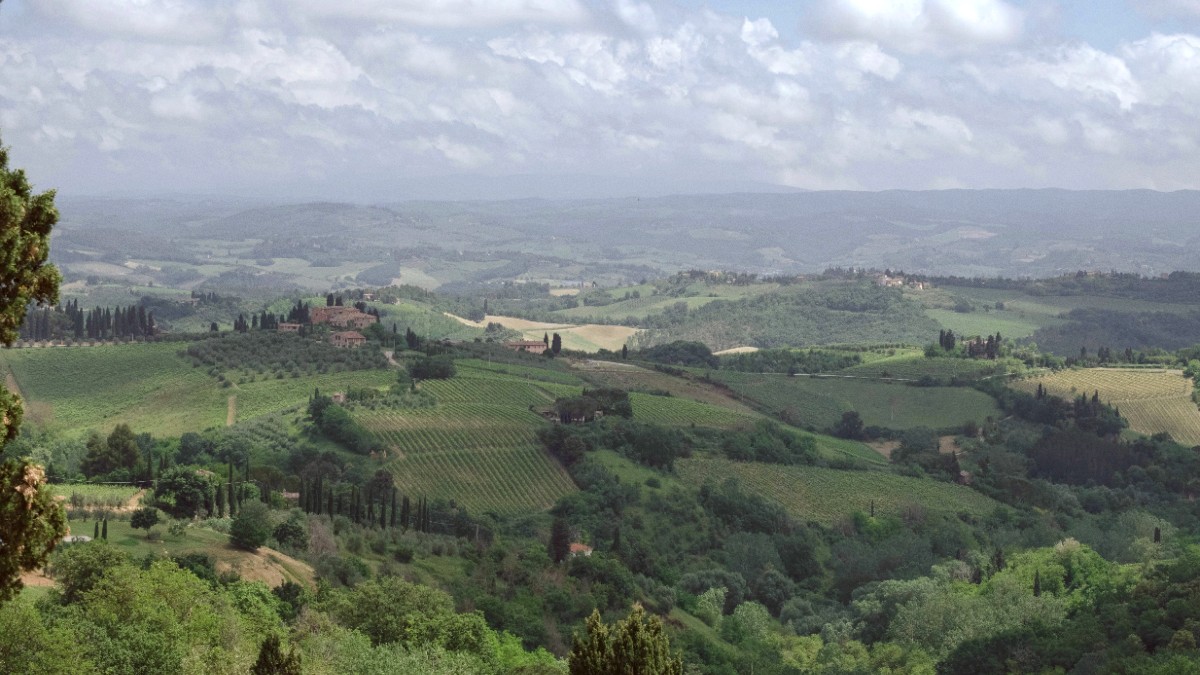
Italy
Travelers find Umbria a peaceful escape. The focus shifts from grand, crowded monuments to intimate encounters with art, history, and nature. Explore a quiet piazza, find a hidden fresco in a centuries-old church, or simply enjoy a meal made with ingredients from the surrounding land.
Umbria sits in the center of the Italian peninsula, the only region without a coastline or a shared border with another country’s territory. This central, landlocked position shapes its identity. The region is largely hilly and mountainous, dominated by the Apennine mountain range to the east. These mountains create a dramatic backdrop, influencing the climate and forming the valleys where much of Umbria’s agricultural activity thrives.
The Tiber River flows through Umbria, forming a significant valley that offers fertile ground. Lake Trasimeno, the fourth largest lake in Italy, lies in western Umbria. This large, shallow lake creates a different ecosystem. The topography shaped historical development, leading to numerous fortified medieval towns perched strategically, offering commanding views. Forests cover considerable portions, contributing to the region's "green heart" designation.
Umbria’s history stretches back millennia, leaving layers of civilization etched into its landscape. The story begins with the Etruscans, an ancient civilization predating the Romans. Towns like Perugia and Orvieto originated as Etruscan settlements, built atop strategically advantageous hills. Remnants of their presence are found in archaeological sites, city walls, and intricate underground networks. The Romans later absorbed Etruscan territories, integrating Umbria into their empire. Roman influence is visible in remains of amphitheaters, temples, and roads, specifically in Spoleto and Terni.
Following the fall of the Roman Empire, Umbria entered a period of fragmentation. It became a battleground for various invading forces and local lords. This era led to the rise of independent city-states, each fiercely protective of its autonomy. Towns like Perugia, Gubbio, and Orvieto built impressive public palaces, cathedrals, and defensive structures. This period also saw the rise of Umbria's enduring spiritual character, becoming the birthplace of influential saints, most notably Saint Francis of Assisi in the 12th century. His life and teachings had a profound impact.
Perugia and Orvieto built as sophisticated settlements.
Infrastructure and trade routes established, seen in Spoleto and Terni.
Perugia, Gubbio, Orvieto developed strong municipal identities.
Saint Francis of Assisi's movement shaped spiritual identity.
Centuries of Church influence preserved medieval character.
The Renaissance, while perhaps less dominant in Umbria than in neighboring Tuscany, still left its mark. Umbrian artists like Perugino and Pinturicchio made noteworthy contributions, their works often characterized by serene beauty and devotion. The National Gallery of Umbria in Perugia houses a remarkable collection from this period, demonstrating the region’s artistic heritage.
For centuries, much of Umbria fell under the dominion of the Papal States, which contributed to its conservative character and the strong presence of the Church. This political and religious influence meant that Umbria remained largely agricultural and less industrialized than some northern Italian regions. This slower development, however, helped preserve its medieval character and rural traditions, elements that draw many visitors today.
The unification of Italy in the 19th century brought Umbria into the modern Italian nation. The region then experienced gradual development, balancing its traditional roots with new economic realities. The history of Umbria is not just a collection of dates and events; it is a living narrative. Each cobbled street, every ancient church, and the walls of every hill town tell a story of resilience, faith, and the enduring human spirit.
Umbria invites thoughtful exploration, promising memorable experiences and a true connection to the heart of Italy.
Umbria offers a distinct taste of Italy, often described as a gentler, more serene alternative to its famous neighbors. Imagine a region where the pace slows, allowing you to savor each moment. This quiet atmosphere is one of its most appealing traits.
Umbria prides itself on its authenticity. This is a region where traditions hold strong. You will encounter locals going about their daily lives, often with a friendly curiosity towards visitors. The region has not been overwhelmed by mass tourism, allowing for more genuine interactions and a immersion into local customs.
Hill towns like Assisi and Orvieto dot a landscape of rolling hills, dense forests, and fertile valleys.
Hearty, rustic dishes with prized truffles, cured meats, and local wines like Sagrantino.
Hiking, cycling, cooking classes, wine tastings, artisan workshops, and local festivals.
Life in Umbria moves at a comfortable pace. Shops often close for a midday break (riposo), and evenings welcome the traditional passeggiata (evening stroll) before dinner. This slower rhythm encourages visitors to relax, unwind, and truly absorb the atmosphere. It contrasts sharply with the hustle of larger Italian cities, offering a tranquil retreat.